The Archive of Projects
This is a list of the main projects carried out by ITeC. The Project Topics menu allows you to narrow the list down according to the subjects covered.
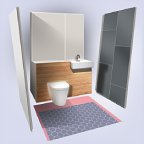
Evaluation of off-site building systems for bathrooms and kitchens
Drafting of an evaluation protocol according to European and Spanish regulatory criteria for industrialized systems for bathrooms and kitchens where wall-sized elements are delivered to the site with pre-fitted water, electricity and drainage pipes, as well as with the final surface finish.
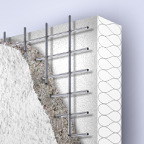
Assessment of a construction technique for load-bearing walls
A building system for load-bearing walls combines insulating panels that are fitted with electro-welded reinforcement meshes on which shotcrete is projected on both sides. Separately, all components are regulated by harmonized regulations, but the whole kit does not fall within the field of application of any EN standard. ITeC has verified that the proposed system matches the terms of the EAD 340002 and has overseen the process towards a European Technical Assessment.

“Hardwood for the Home” project: new wood construction system
In this LIFE HFH project, new construction products will be developed using wood sourced from Spanish forestry operations, which will be the basis for a construction system for multi-family buildings. The system must satisfy two conditions: on the one hand, it must be ready for CE marking to enter the construction market immediately; and on the other, it must be competitive enough to be prescribed in public housing projects.
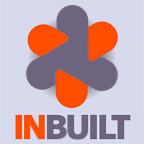
INBUILT project: innovative bio/geo-sourced, re-used and recycled construction products
INBUILT will develop and demonstrate 10 innovative products and systems, such as large-sized rammed earth blocks, recycled fired and non-fired bricks, hybrid straw-clay boards, recycled concrete (bulk and blocks), prefabricated waste wood wall elements, smart windows and curtain walls with recycled glass and bio-PUR frames, recycled textile and paper fibre insulation, bio-based recycled insulation and second life photovoltaic panels.
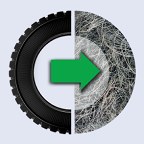
Assessment of recycled metal fibres for concrete reinforcement
A manufacturer extracts metal fibres from end-of-life tires which can be reused to obtain fibre-reinforced concrete (FRC) in line with the provisions of the Spanish Structural Code. This means that the fibres must be CE marked, but such recovered fibres fall outside the scope of harmonized standard EN 14889-1. ITeC has offered the manufacturer an alternative through a European Technical Assessment.

RENplusHOMES project: positive energy homes
RENplusHOMES develops a toolbox with 23 instruments, including building techniques, software and circular methodologies for turning residential buildings into positive energy buildings, able to produce more energy than they consume and pour the surplus into the network. These instruments are tested and implemented in four large-scale demonstration projects in Austria, Spain, Estonia and Romania, covering both new construction and renovation.

Calculation of the carbon footprint in the forestry sector
A public entity with responsibilities in the field of forestry management has requested advice from ITeC to ensure that their carbon footprint calculation methods are the right ones for the entity’s purposes. ITeC has prepared a tailored training program to update the staff’s knowledge and skills using the BEDEC Sustainability database and the TCQiGMA software. Particular attention has been paid to the correct assessment of sustainability in public tendering.

Assessment of a liquid applied watertight kit for wet rooms
A manufacturer offers a liquid waterproofing system for preparing walls and floors prior to tiling in humid areas, such as bathrooms and kitchens. Even though the waterproofing is mostly provided by a liquid coating, the rest of the components (primer, adhesive for the ceramic tiles, sealant for the joints around the tiles) also contribute to the overall performance. Taking this into consideration, ITeC has defined an Assessment Plan with the requirements to be met and the methods for testing them, according to EAD 030352-00-0503.

Assessment of a maintenance and replacement plan to adjust it to the needs of the building
The company that has been contracted to maintain a group of public buildings has noticed that the Maintenance Plan and the Replacement Program defined by the administration that owns the buildings do not fully match the real needs and does not include all the procedures required by law. ITeC has been asked to make a proposal to improve the scope and periodicity of the maintenance and replacement work, making sure that it complies with the regulations and it fits all the needs of the buildings in question.
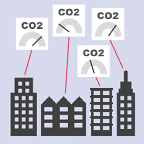
INDICATE project: collecting building-level WLC data in Europe
Europe is facing a big challenge when it comes to decarbonise its buildings: the lack of data to support policymaking and strategic business decision-making. The goal of INDICATE is to collect Whole Life Carbon (WLC) data from real buildings to support the demand for product-level life cycle assessment (LCA) and to set WLC benchmarks. Data collection must be coherent (all project partners will agree on a common methodology) and comprehensive (different building systems, climatic zones and use cases will be represented on the sample)



